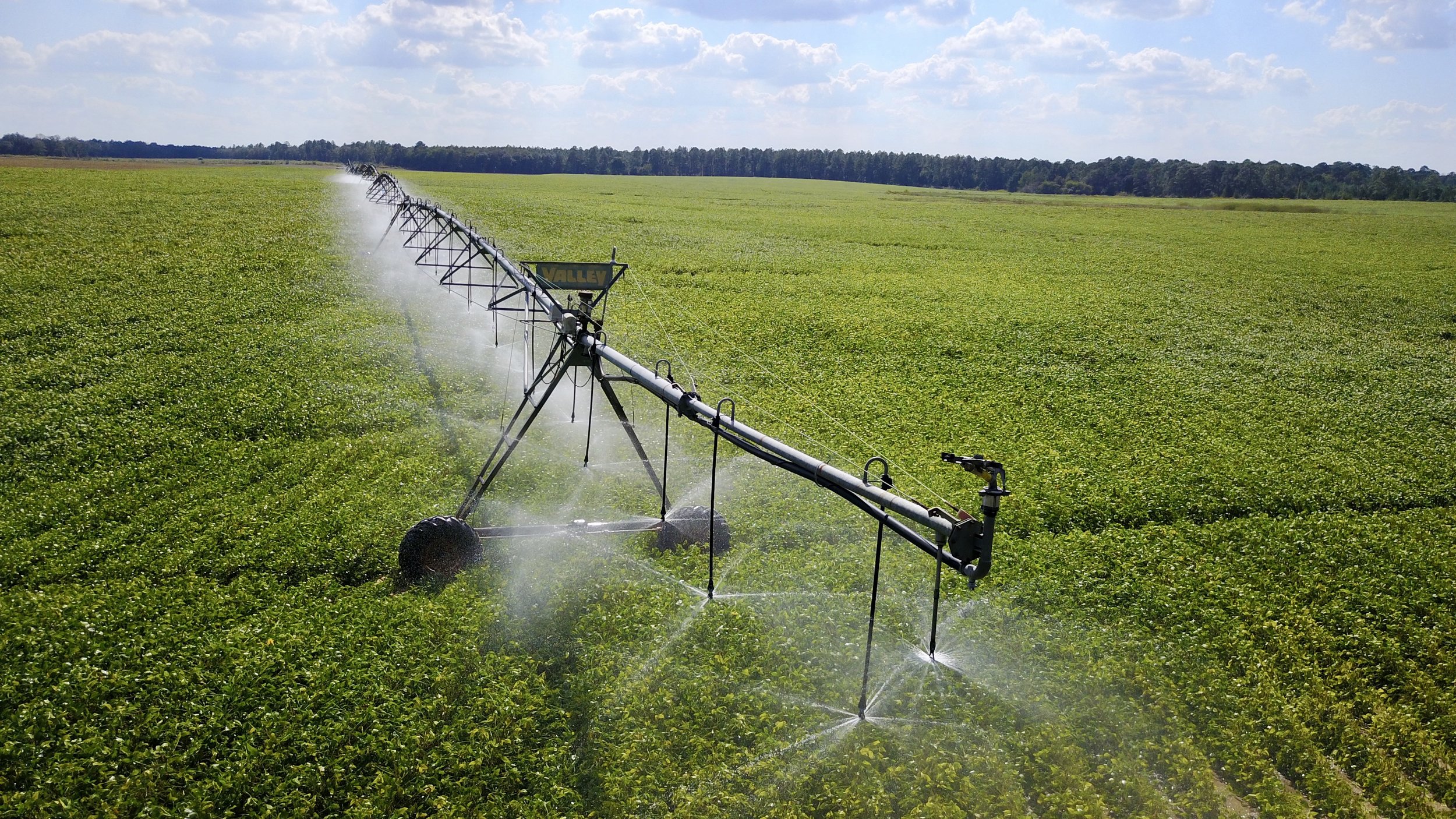
Natural Resources Conservation Workshop at ABAC in Tifton June 9-13
Over $15,000 in college scholarships, back-to-nature field trips, and a true
taste of college life will be on the line for high school students who attend this year’s Natural
Resources Conservation Workshop (NRCW) on June 9-13 at Abraham Baldwin Agricultural
College.

2019 Soil Stewardship Week Poster Contest
The Flint River Soil & Water Conservation District is pleased to announce the 2019 Soil Stewardship theme: “Life In The Soil: Dig Deeper.” Soil Stewardship Week will be officially celebrated April 28to May 5, 2019, and is a fun and educational learning experience for all students! Soil Stewardship Week helps remind each and every citizen of the power of each person to conserve natural resources and improve our world. This year marks the 64th Anniversary of NACD Soil and Water Stewardship Week!

District Announces New Job Opportunity
The Flint River Soil and Water Conservation District (SWCD) is now accepting applications for the position of Project Director. The District’s Project Director will be responsible for the implementation, management, reporting, and coordination of ongoing District projects. Additionally, the Project Director will be expected to formulate and develop new projects that align with the District’s mission.

Optimize Water, Maximize Yield with New Irrigation Scheduling App
A new version of Irrigator Pro will be available for free in the upcoming 2019 crop season. A team of partners has been working to update the Irrigator Pro platform to increase adoption and accessibility for growers. Now, Irrigator Pro is available to download as a smartphone application in the Apple iOS and Google Play stores. A new cloud-based website platform will also launch in 2019.

Conservation through Innovation: Dynamic Variable Rate Irrigation
Water is one of the most precious resources we have on the planet. It is vital to all aspects of human life, including agriculture. That’s why this cutting-edge technique, which increases irrigation water use efficiency by up to 40%, is a powerful tool for the future of conservation and production.

Dynamic Partnership Brings Hands-on Ag Learning to Dougherty County Students
Students in Dougherty County will have the opportunity this spring to participate in free programming at Chehaw Park to learn about agriculture and natural resources through a partnership between Destination Ag and the Flint River Soil and Water Conservation District (SWCD).

2018-2019 Agricultural & Education Grants
The Flint River Soil and Water Conservation District is sponsoring Agricultural & Environmental Education Grants. More information and the grant application are available at flintriverswcd.org/education.

USDA-NRCS IN GEORGIA AND FLINT RIVER DISTRICT ANNOUNCE CLIMATE RESILIENCY PROJECT SIGN UP
State Conservationist Terrance O. Rudolph of the U.S. Department of Agriculture’s (USDA) Natural Resources Conservation Service (NRCS) and Marty McLendon, chairman of the Flint River Soil and Water Conservation District (SWCD) announced today that a sign up for the Climate Resiliency in Georgia, Florida and Alabama project is under way. The deadline for eligible producers inGeorgia to apply is April 20, 2018.

2018 Soil Stewardship Week Poster Contest
The Flint River Soil & Water Conservation District is pleased to announce the 2018 Soil Stewardship theme: “Watersheds... Our Water, Our Home.” Soil Stewardship Week will be officially celebrated April 29 to May 6, 2018, and is a fun and educational learning experience for all students! Soil Stewardship Week helps remind each and every citizen of the power of each person to conserve natural resources and improve our world.

2017-2018 Education Grant Application Period Now Open!
2017-2018 Agricultural and Environmental Education Grants applications available at flintriverswcd.org/education. Deadline: January 5, 2018.

Flint River SWCD Hires New Urban Program Coordinator
The District's new urban agriculture conservation program takes root in Albany, Georgia with the addition of Fredando Jackson to the team.

Flint District Selected to Lead Innovative Project
The U.S. Department of Agriculture (USDA) Natural Resources Conservation Service (NRCS) recently announced awards for the 2017 cycle of funding for the Conservation Innovation Grant (CIG) Program. The Flint River Soil and Water Conservation District, based in southwest Georgia, will lead one of 33 projects selected nationwide for funding. CIG is a competitive grant program administered by NRCS that advances the development and implementation of conservation-driven technologies and practices.

Flint River Receives District of the Year Award
The Georgia Association of Conservation Districts (GACD) recently held their annual meeting at Lake Lanier Islands in Buford, Georgia. The Flint River Soil and Water Conservation District, comprised of 9 counties in southwest Georgia, received the distinguished honor of being named District of the Year. The District of the Year award was established by GACD in 2001 to recognize the conservation district in Georgia which best plans, implements, and reports a conservation program during the year.

FLINT DISTRICT SELECTED TO LEAD $3 MILLION TRI-STATE CONSERVATION PROJECT
The U.S. Department of Agriculture (USDA) announced recently the selection of 88 locally-led conservation projects across the United States through the Regional Conservation Partnership Program (RCPP). The Flint River Soil and Water Conservation District, comprised of 9 counties in southwest Georgia, was selected to lead a project focused on strengthening climate resiliency for farmers and landowners in Alabama, Florida, and Georgia.


Urban Agriculture Conservation
The Flint River Soil and Water Conservation District (SWCD) was awarded $50,000 to build technical assistance capacity for urban agriculture conservation projects on Sunday, July 17, by the National Association of Conservation Districts. NACD granted a total of $2 million to Flint River SWCD and 41 other districts across 25 states.

Education Grants
One of the highlights of our year has been working with local teachers who were awarded our first Environmental and Agricultural Education Grants. The District received stellar proposals from all over southwest Georgia, and selecting the winners proved to be a major challenge as all the projects were thoughtful, creative, and experiential.

Innovative Irrigation Project on Spring Creek
The Flint River Soil and Water Conservation District was recently awarded a Regional Water Plan Seed Grant from the Georgia Environmental Protection Division to conduct an innovative project in the Spring Creek Basin.

2016 Wildlife Shows
Each year, the Flint River Soil and Water Conservation District partners with the Georgia Southern University Center for Wildlife Education to bring wildlife to the classroom in local southwest Georgia schools. This year, the District sponsored shows at Terrell Academy, Pataula Charter Academy, Pelham Elementary School, and Shiver Elementary School.

2016 Soil Stewardship Week Poster Contest
The Flint River Soil & Water Conservation District is pleased to announce the 2016 Soil Stewardship theme: “We All Need Trees”. Soil Stewardship Week will be officially celebrated April 24 to May 1, 2016, and is a fun and educational learning experience for all students! Soil Stewardship Week helps remind each and every citizen of the power of each person to conserve natural resources and improve our world. This year marks the 61 st Anniversary of NACD Soil and Water Stewardship Week!
